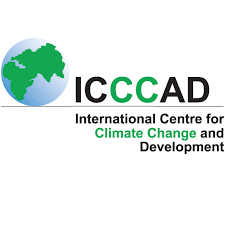Made with Visme
Bangladesh Re-Energizing!
Bangladesh, one of Asia's fastest-developing nations, faces the direct impacts of climate change. With rising energy demands, the country has made notable progress in expanding its renewable energy capacity over the past two decades, yet significant untapped potential remains.
Re-energize Bangladesh is an initiative by Green Lead to accelerate the energy transition by providing a one-stop- center for renewable energy information. It includes the country’s energy landscape, policy, tools and ‘energizED” - a course designed to inspire the next generation of energy leaders!
For the best experience, a desktop view is recommended.
Renewable energy growth?
4.96%
Renewable Energy Growth
Generation Mix: Where do we get our electricity from?
| Fuel/Resource | Installed Capacity | Share |
|---|---|---|
| Coal | 7179 MW | 23.05 % |
| Gas | 12384 MW | 39.76 % |
| HFO | 5885 MW | 18.89 % |
| HSD | 290 MW | 0.93 % |
| Imported | 1160 MW | 3.72 % |
| Renewable | 1449.45 MW | 4.96 % |
| Captive | 2800 MW | 8.99 % |
| Total | 31147 MW | 100.00 % |
| Technology | Off-grid (MW) | On-grid (MW) | Total (MW) |
|---|---|---|---|
| Solar | 377.09 | 778.29 | 1155.38 |
| Wind | 2 | 60.9 | 62.9 |
| Hydro | 0 | 230 | 230 |
| Biogas to Electricity | 0.69 | 0 | 0.69 |
| Biomass to Electricity | 0.4 | 0 | 0.4 |
| Total | 380.18 | 1069.19 | 1449.37 |
The scientific feasibility done by the World Future Council and its partners unveils that deploying 100% renewable energy in Bangladesh is possible. Moreover, it can provide access to reliable energy for all its citizens, while increasing living standards to the level of industrialized countries by 2050. It also suggests that a renewable energy-based system can create 1 million more jobs than the fossil fuel industry in the same timeframe. Explore the full report here.
The Renewable Energy Ambitions of Bangladesh
15% of electricity from renewables by 2030
40% of electricity from renewables by 2041
100% of electricity from renewables by 2050
RE Policy and Resource Corner
Explore Tools to Re-energize Your Home and Beyond!
Find the best renewable energy solution for you! Calculate your solar panel needs or estimate wind power potential in just a few clicks.
Our Way Ahead: Recommendations
- Set Clear and Legally Binding Targets : Establish a legally binding 100% renewable energy target by 2050, with aim to achieve intermediate milestones.
- Integrate Renewable Energy into National Planning: Ensure that renewable energy is embedded across policy areas, including climate action, economic growth, and the Sustainable Development Goals (SDGs).
- Promote a Just Energy Transition: Implement policies ensuring an equitable transition by supporting workers in fossil fuel industries and providing social protections.
- Strengthen Renewable Energy Decision-Making Bodies: Build institutional capacity within government agencies, including SREDA, to lead a long-term renewable energy strategy.
- Accelerate Community-Led Renewable Energy Initiatives: Provide incentives and technical support for decentralized and community-based renewable energy projects.
- Ensure Transparent and Stable Policies: Create a stable regulatory environment with clear incentives for investors in renewable energy.
- Promote Adoption and Capacity Development for Skilled Workforce: Establish vocational training programs, university curricula, and upskilling initiatives to develop a strong workforce for the renewable energy sector.
- Encourage Industry-Academia Collaboration: Facilitate partnerships between universities, research institutions, and industry leaders to drive innovation and practical skill-building.
- Provide Financial Incentives for Green Jobs: Offer subsidies, tax benefits, and financing options to companies investing in renewable energy workforce training and employment.
- Prioritize Development of Wind and Solar Infrastructure: Expand wind and solar power generation, particularly in coastal and rural areas.
- Modernize the National Grid for Renewable Integration: Invest in smart grids, transmission systems, and battery storage to handle fluctuating renewable energy supply.
- Promote Bottom-Up Electrification: Utilize existing Solar Home Systems (SHS) and mini-grid networks to expand rural electrification.
- Accelerate Deployment of Wind and Solar PV: Fast-track investment in large-scale solar parks, floating solar, and offshore wind projects.
- Research and Promote Innovative Renewable Technologies: Support R&D in solar thermal, bioenergy, and hydrogen to diversify renewable energy sources.
- Electrify Transportation and Heating Sectors: Expand electric vehicles (EVs), solar-powered cooking, and renewable-powered industrial heating.
- Prioritize Energy Efficiency Measures Across Sectors: Implement mandatory energy efficiency standards in industries, buildings, and appliances.
- Promote Storage Capacity Development: Invest in large-scale battery storage, transfer technology and adopt feasible energy storage solutions.
- Encourage Demand-Side Management: Use smart metering and incentives to optimize energy consumption patterns.
Media Features
Get energiZED
Educating next generation of energy leaders
Enroll now to explore your opportunities in renewable energy sector!
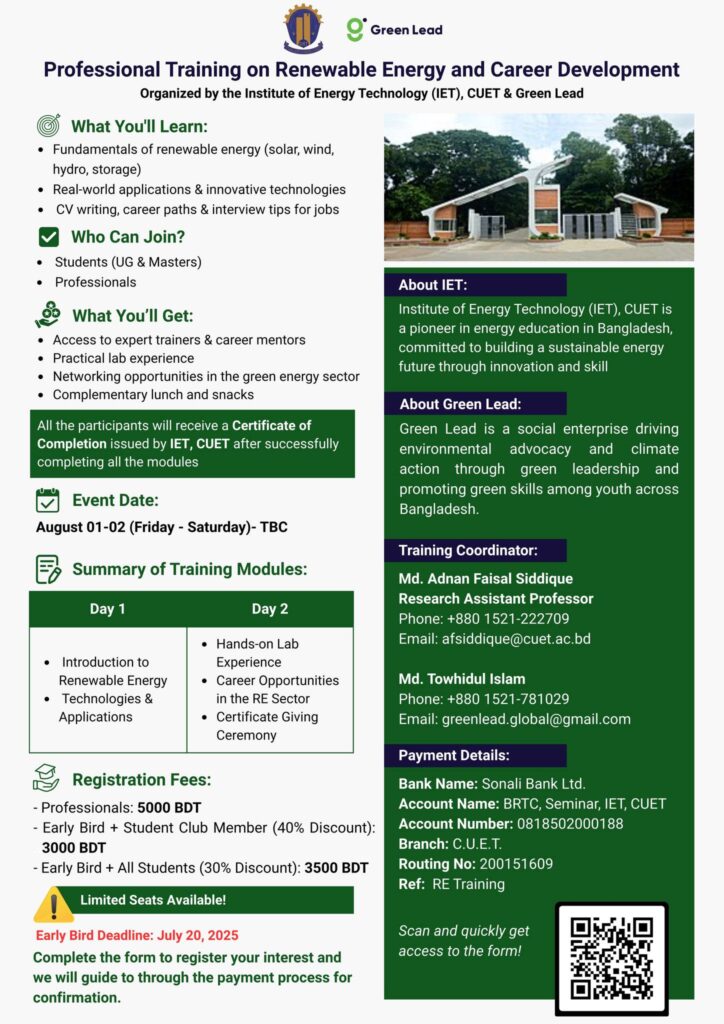
Join the Professional Training on Renewable Energy & Career Development
📅 Date: July 25- July 26, 2025 (TBC)
📍 Venue: CUET Campus
🕘 Time: Two full days of sessions (Friday & Saturday)
► Open to Undergrad, Masters & Professionals
► Learn about solar, wind, hydro, real-world applications & career tips
► Network with experts, gain hands-on lab experience
► Get a Certificate of Completion from IET, CUET
![]() Limited seats! Register before July 20, 2025
Limited seats! Register before July 20, 2025
career pathways in Bangladesh’s Renewable Energy sector
We’re honored to host two visionary leaders shaping Bangladesh’s renewable energy landscape. Mostafa Al Mahmud, Chairman of Gtech Solution Ltd and President of BSREA, is a renowned international businessman and a driving force behind the country’s solar energy revolution. Joining him is Engr. Naznin Akther, Director at SOLARIC Group and BSREA, an award-winning advocate recognized as “Women Leader of the Year” for her impactful work in sustainable energy and green entrepreneurship.
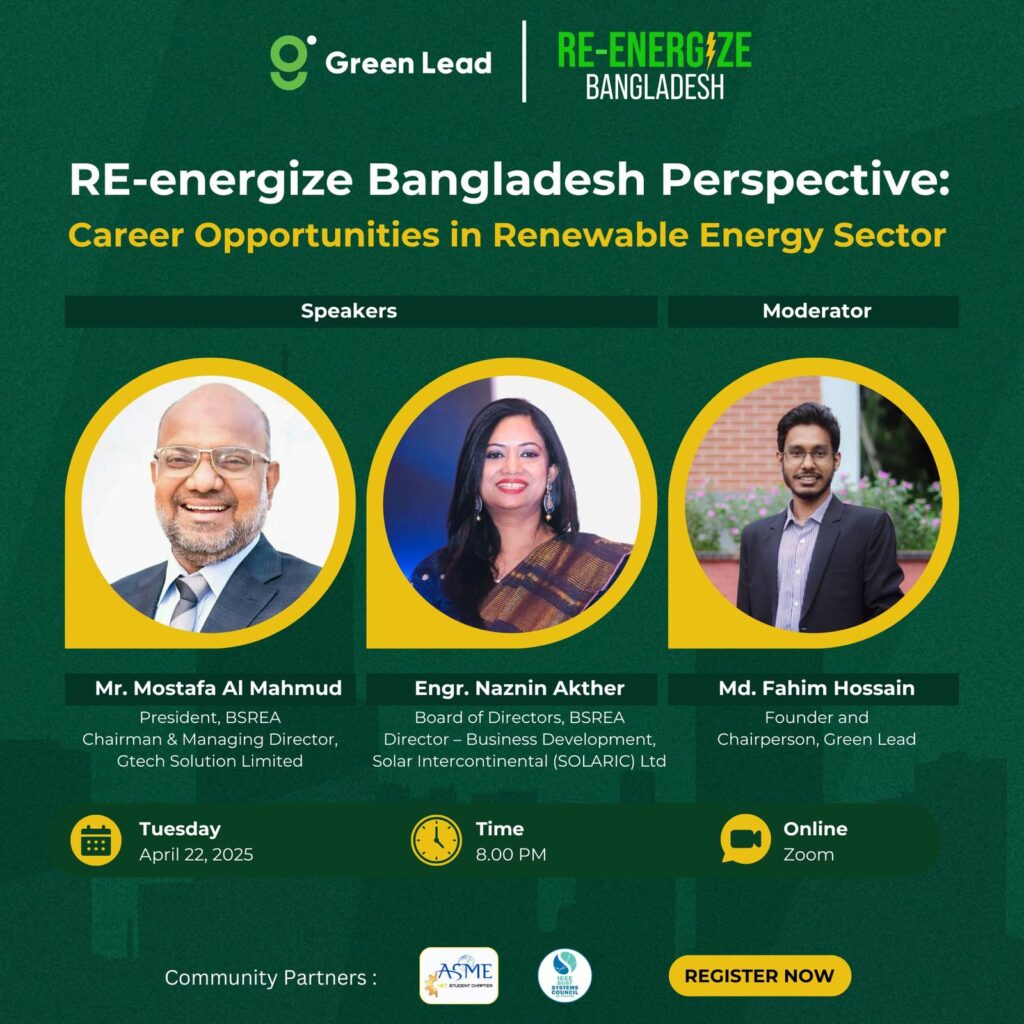
RE-Power School
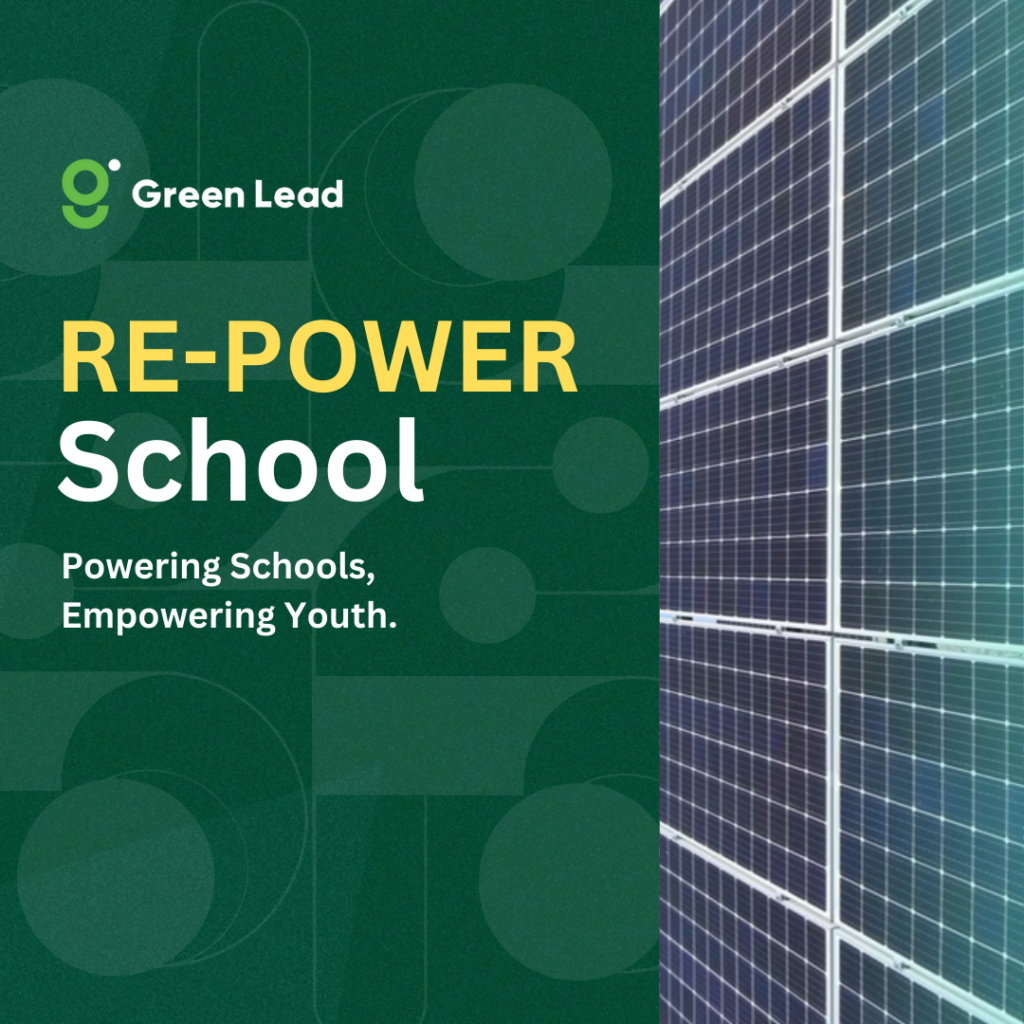
RE Power School is a pioneering initiative that transforms schools into live learning hubs for renewable energy. By installing off-grid solar systems and delivering hands-on green skills training, the program empowers students, youth, and communities to understand, adopt, and lead clean energy solutions. It’s not just about powering classrooms — it’s about building the next generation of climate and energy leaders for a sustainable future
RE POWER YOUTH
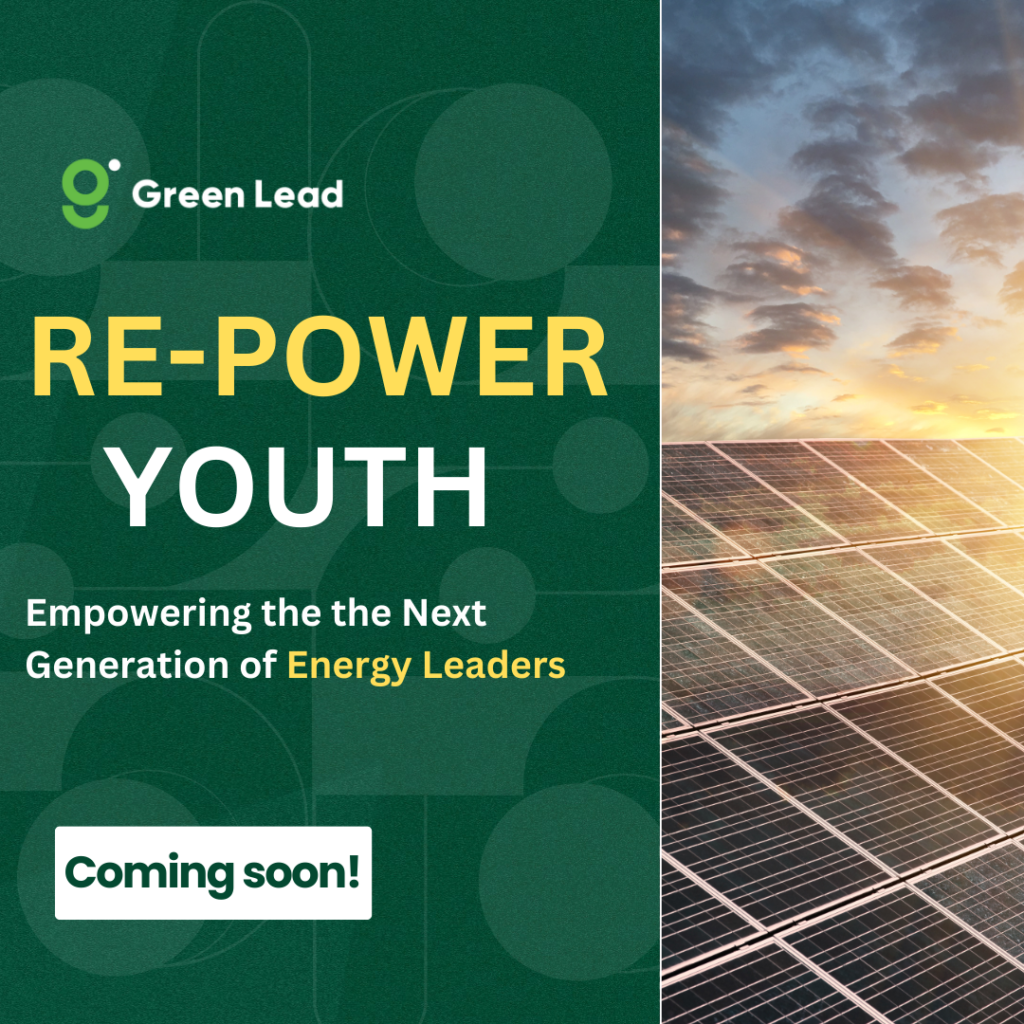
The RE-Power Youth aims to empower youth in Bangladesh through green skill development with a special focus on renewable energy education and adoption.
The project will train and provide mentorship to youth on green skills specially on understanding local climate risks, community renewable energy adoption and community adaptation. It will empower them to pursue green jobs, boost livelihoods and increase community community resilience.
Stay tuned for updates!
Are you ready, Young Minds?
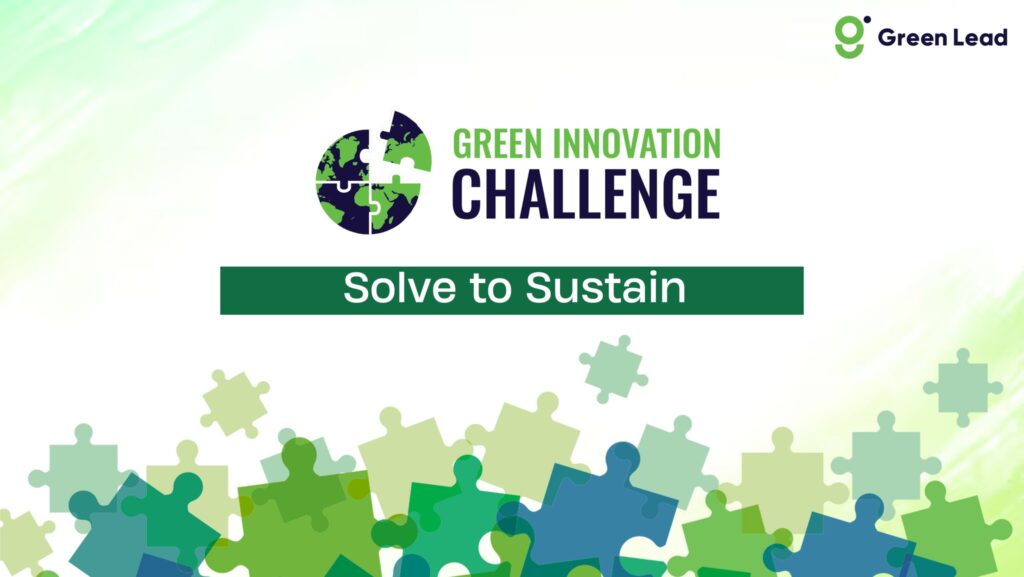
Contact Us
The initiative is recognized as one of the winners of the ICCCAD Youth Innovation Fund in 2024.
